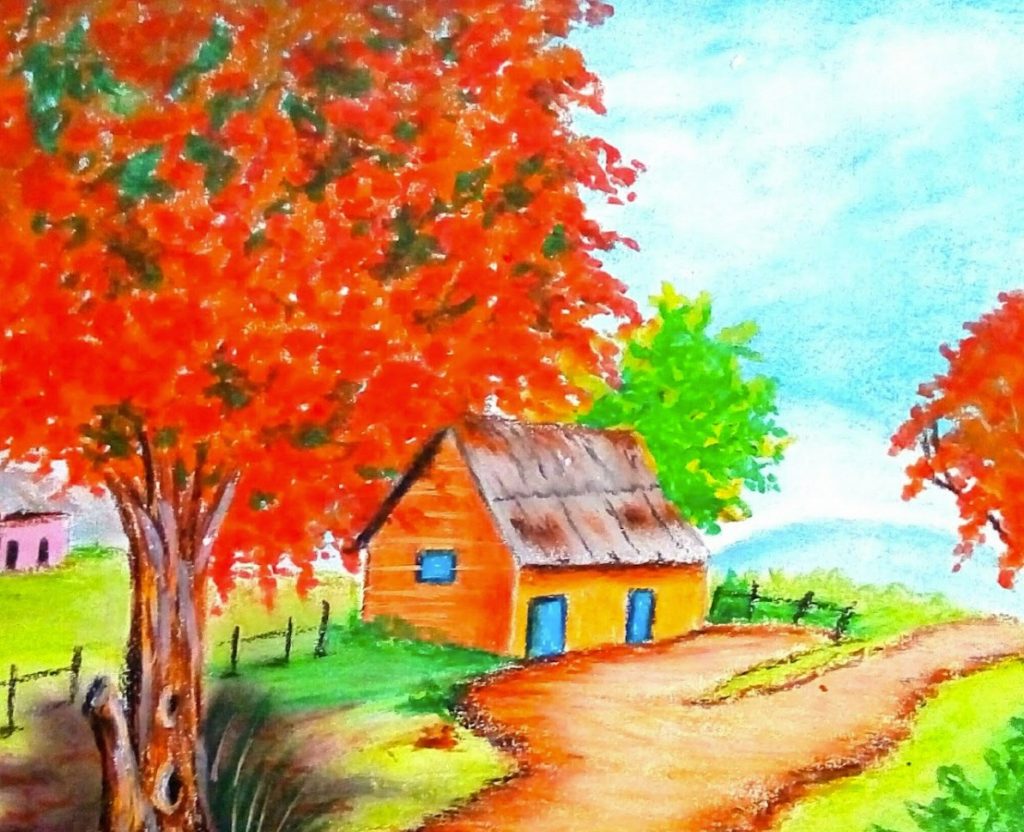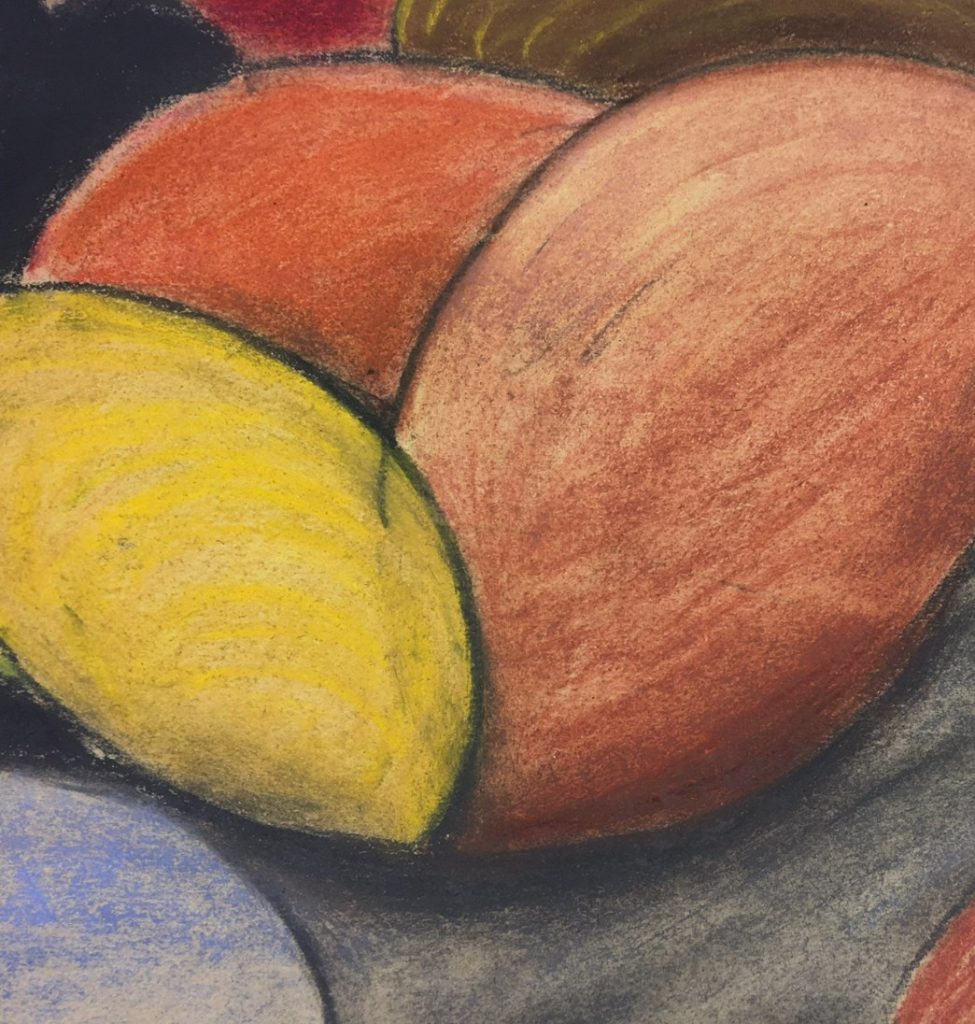Oil pastels, with their vibrant pigments and smooth blendability, are an artist’s dream tool for capturing the essence of still life. Unlike traditional paints, they offer a delightful immediacy, allowing you to translate the interplay of light and color on everyday objects – a glistening pear, a crumpled linen napkin, or a bouquet bathed in warm sunlight – onto your canvas with a captivating directness. This guide explores four key techniques to unlock the power of oil pastels and transform them into instruments for creating stunning still life paintings.

Part 1: The Dance of Light and Shadow – Building Form
Understanding Light: Identifying Highlights and Shadows
Light and shadow are the building blocks of a captivating still life. The way light interacts with your objects defines their form, depth, and overall composition. Begin by identifying the light source and how it falls on your objects. Areas directly hit by light become your highlights, while those in shadow become darker and cooler in tone. This interplay creates a sense of three-dimensionality, making your still life appear lifelike.
Local Color: The Foundation for Light and Shadow
Local color refers to the inherent color of an object, independent of light and shadow. While highlights and shadows will alter the perceived color of an object, understanding the local color is crucial for creating a realistic and cohesive composition. Utilize your local colors as the foundation upon which you layer your highlights and shadows, building a harmonious interplay of light and color.
Part 2: The Magic of Blending – Creating Depth and Atmosphere

Layering and Blending: Seamless Transitions
Oil pastels excel at blending, allowing you to create smooth transitions between light and shadow, adding depth and atmosphere to your still life. Start by applying a thin layer of your local color. Subsequently, layer lighter colors for highlights and darker colors for shadows. Utilize your fingers, blending stumps, or even cotton swabs (with caution) to soften the edges between colors. This creates a seamless transition of light and shadow, adding a sense of realism and atmosphere to your artwork.
Selective Detail and Color Variation
While creating a sense of realism is important, don’t lose sight of the emotional impact you want to evoke. Use the tip of your oil pastel or a blending tool with minimal pressure to define details like wrinkles in a cloth, the dewdrops on a flower petal, or the subtle veins in a piece of fruit. Remember to incorporate slight color variations within your highlights and shadows. This adds visual interest and prevents your still life from appearing flat or monotone.

Part 3: Color Choices: Evoking Mood and Harmony
The Power of Color: Harmony, Contrast, and Mood
Oil pastels offer a vast spectrum of color, allowing you to create a harmonious or contrasting color scheme depending on the mood you want to evoke. A harmonious palette, using colors that sit close together on the color wheel, creates a sense of peace and tranquility. Conversely, a contrasting palette, using colors opposite each other on the color wheel, creates a more dynamic and energetic composition. Experiment with warm and cool colors to evoke specific moods. Warm colors like yellows and oranges often create a sense of joy and comfort, while cool colors like blues and greens can evoke a sense of serenity or mystery.
Color Temperature: Creating a Unified Composition
Color temperature refers to the inherent warmth or coolness of a color. Understanding color temperature is crucial for creating a unified and cohesive still life composition. Observe how light interacts with your objects, not just in terms of light and shadow, but also in terms of color temperature. Objects bathed in warm light may take on a slightly yellowish hue, while those in cool shadows may appear slightly bluish. Reflecting these subtle temperature variations in your oil pastels adds realism and depth to your artwork.
Part 4: Experimentation and Practice: Honing Your Still Life Skills

Embrace the Unexpected: Exploring Color and Technique
The beauty of oil pastels lies in their versatility. Don’t be afraid to experiment with unexpected color combinations or techniques. Try using unconventional tools for blending, or explore applying water or solvent washes over your oil pastels for unique effects. Experiment with juxtaposing contrasting textures, like a smooth glass vase against a rough woven cloth. The more you experiment, the more you’ll discover the unique potential of this medium and develop your own artistic voice.
Practice Makes Perfect: Capturing the Essence of Everyday Objects
Creating captivating still lifes with oil pastels takes dedication and practice. Start with simple arrangements, focusing on mastering the techniques covered in this guide. As you gain confidence, introduce more complex compositions with multiple light sources and experiment with different color palettes. Remember, the more you practice, the better you’ll understand how to translate the interplay of light and color onto your canvas, transforming everyday objects into stunning works of art that capture the essence of the moment.
Oil pastels offer a delightful immediacy that allows you to capture fleeting moments of light and shadow, the way sunlight glints off a crystal vase or how the color of a flower deepens as dusk approaches. Embrace the spontaneity of the medium and don’t be afraid to experiment!

Here are some additional tips to keep in mind:
Reference Photos: Utilize photographs as a reference, especially when capturing complex lighting or intricate details. However, don’t feel confined by the photo. Use it as a starting point and allow your creativity to take flight.
Composition is Key: A strong composition is essential for a captivating still life. Consider the rule of thirds, which divides your canvas into thirds both horizontally and vertically. Arrange your objects at the intersections of these lines or along the lines themselves to create a visually pleasing composition.
Negative Space Matters: Don’t neglect the importance of negative space, the area surrounding your objects. Utilize negative space to create a sense of balance and draw attention to specific elements within your composition.
With dedication and a spirit of exploration, you’ll unlock the power of oil pastels to capture the captivating interplay of light and color in your still life paintings. So grab your oil pastels, arrange your objects in a captivating composition, and embark on your artistic journey to transform the ordinary into the extraordinary!





